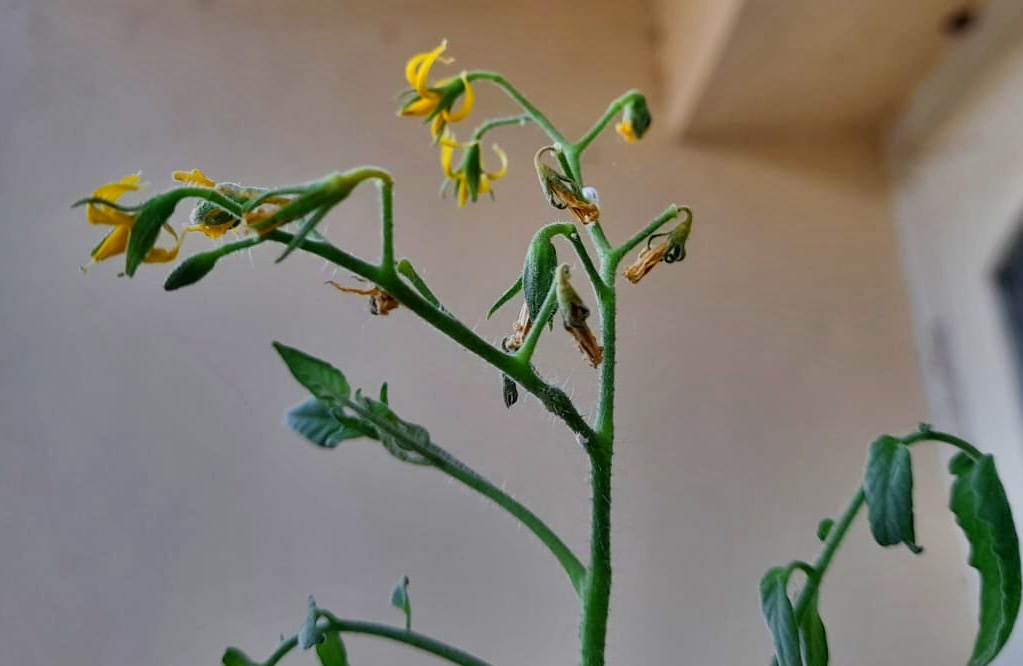How to prevent blossom drop on tomato plants.

Blossom drop on tomatoes is a common problem many gardeners face. You will find flowers blooming one day and the next day they will dry and fall off. Here are a few reasons why this problem occurs and here’s how to prevent blossom drop on tomato plants.
Reasons for blossom drop on tomato plants:
- High or low temperatures.
- High or low humidity levels.
- Pests and Diseases
- Overfertilizing or under fertilizing
- Overwatering or underwatering
- No pollination
1. High or low temperatures
Daytime temperatures that are greater than 85°F(29°C) and lower than 55°F(can stress your plants). When the temperatures are too high your tomato plants focus on survival dropping its flowers. When temperatures are low your plant eventually dies. Grow tomato varieties that are more suitable to your region’s temperatures. If you are living in areas where temperatures are high grow drought-resistant tomato varieties.
2. High or low humidity levels
The ideal humidity levels for tomato growth are between 40% to 70%. If humidity levels are too high the pollen sticks with the stigma and this prevents pollination. Grow humidity-tolerant tomato varieties. If humidity levels are low on your tomatoes, you can water your tomato plants to increase humidity levels.
3. Pests and diseases
Tomatoes are susceptible to a variety of pests such as whiteflies, aphids, mealy bugs and other pests. They are also susceptible to many fungal diseases like powdery mildew, downy mildew and white mould. When your tomato plants are affected by pests and diseases they start to drop their flowers. Make sure to protect your tomatoes from diseases and pests. Using organic pesticides like neem oil, and diatomaceous earth can help to treat these pests and diseases. Introducing beneficial insects into your garden is another way to control mealy bugs, spider mites and aphids. Here’s how to use neem oil or diatomaceous earth in your garden.
4. Overfertilizing or under fertilizing
Tomatoes are heavy feeders but overfertilizing can harm them in many ways. Overfertilizing can lead to stunted growth, increase the risk of pests and diseases and reduce yields. If you are growing tomatoes in containers, it is best to fertilize them once In 3 weeks. If tomatoes are grown in raised beds or gardens, you can feed them twice during the growing season.
5. Overwatering or underwatering
Tomato roots are deep and they can reach up to 5 feet. Tomato plants must be watered regularly. Underwatering your tomato plants can harm flower and fruit production. Water your plants deeply once a week.
6. No pollination
Your tomato flowers will start to fall off when there is no proper pollination too. Gently shake the flower or use a clean paintbrush to help the pollination of flowers. Growing lots of flowers can also help to attract butterflies and other pollinators to your garden. When there is proper pollination, it can prevent blossom drop on tomato plants.
If you found this article helpful don’t forget to share.
Read more:
- How to increase the yield of tomato plants.
- How to grow tomato from seeds in containers.
- How to prune tomato plants.
- Best companion plants for tomatoes.
